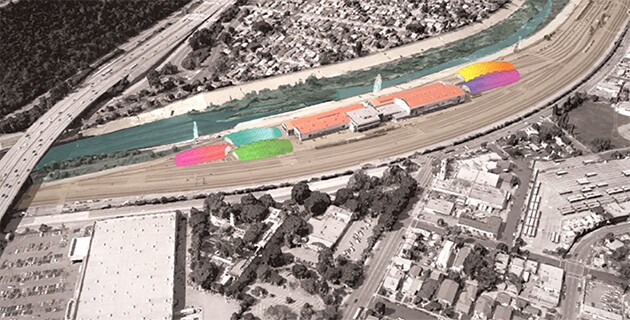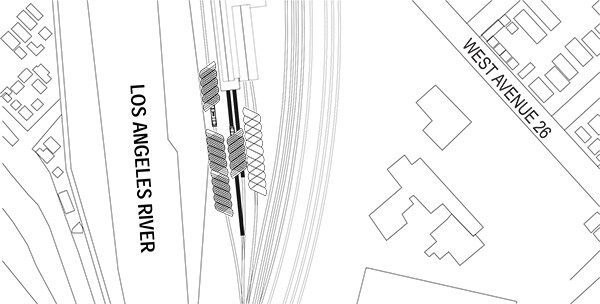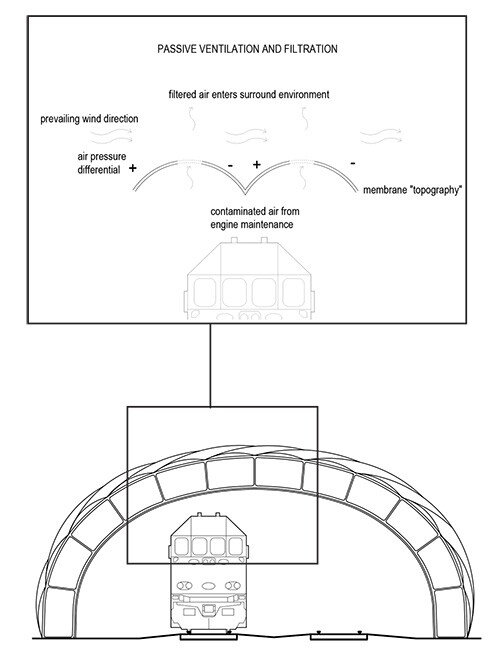Northeast Los Angeles Placemaking Competition: Structures for Noise Reduction

Project submitted by ERW Design
Project designed for Cypress Park
Project Summary and Scale
Membrane, pneumatic structures encapsulate the noise and passively filter air pollution generated by the diesel engines being serviced at the Metrolink Maintenance Yard in Cypress Park.
Why are you committed to this project?
Residents have long-standing issues with the noise and air pollution generated at the Maintenance Yard. These clouds encapsulate the source -- the engines -- with super efficient, lightweight, and inexpensive pneumatic membrane structures. The membrane's geometry promotes passive ventilation and filtration of the contaminants emitted by the combustion engines.
What are the most relevant characteristics of project site and scale?
Metrolink's Maintenance Yard is large and significantly located, positioned at the confluence of the L.A. River and the Arroyo Seco. As such, we urge Metrolink's participation in the revitalization of the L.A. River. The presence of graphically appealing, shapely forms will mark the onset of a clean river environment. Easily viewed from the freeways and bridges, these forms will create iconic symbols of neighborhood and river revitalization.


Describe how this project will reinforce a sense of place or enhance the built environment.
As public transportation expands throughout Los Angeles -- and California -- public transportation entities must also become good neighbors, and participate in the betterment of their neighbors and our shared environment.
Provide a description of the project's necessary planning activities.
This project requires the participation and commitment of Metrolink, and community encouragement.
What is a rough estimate of your project budget?
Construction costs for the fabrication of membrane structures are less than $35 per square foot. Additional costs include 'earth screw' anchors and mechanical blowers to keep the structure erect, and filter the air. Air will be filtered through state of the art MRV 16 air filters to capture small particulates emitting from the locomotives.
How does this project leverage existing resources and efforts?
The surrounding community has a long desired an improvement in conditions at the Maintenance Yard. This project offers an economical, aesthetic, and feasible solution to these grievances.
What community need is your project serving?
This neighborhood needs cleaner air and a quieter environment . This proposal offers an innovative and feasible solution.
If your project is realized, what does success look like?
This project will be successful when Cypress Park, and all adjoining neighborhood residents, have a cleaner and quieter neighborhood. Healthy environments make for healthy people.


